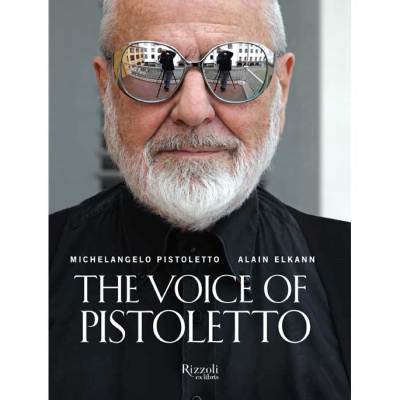The National Lottery turned 20 in November; and with it, those public bodies such as the Heritage Lottery Fund (HLF) that were set up to distribute the proceeds. Has the HLF been a golden ticket for British heritage over two decades, or has it invested unwisely?
YES: Ed Vaizey
No one, I think, could deny that the National Lottery, created by the UK government in 1994, has been a huge success. Countless millionaires have been created as their six lucky numbers came up, newsagents up and down the land have seen their takings grow each Wednesday and Saturday, money available for public spending has swelled as a result of the tax on each ticket, and ‘good causes’ have benefitted to the tune of an eye-watering £32 billion in the 20 years since Noel Edmonds and Anthea Turner presided over the first draw.
Some of the most impressive work that the Lottery has done has come via the Heritage Lottery Fund (HLF), which to date has supported 37,000 projects with £6.1 billion across the UK. I simply don’t have the space to do justice to the enormous range of things this money has supported, but one or two facts do bear repeating.
For historic buildings, more than £2 billion has been awarded to support the conservation of more than 16,700 historic buildings and monuments. Stonehenge, the Cutty Sark in Greenwich, and Tyntesfield in North Somerset spring foremost to mind because they are the big-ticket projects – with multi-million pound HLF support – that make the news; but the great thing about the HLF is that, for every one of those, there are hundreds of tiny projects: improving visitor facilities by, for instance, installing toilets in places where those available are on the rudimentary side, or repairing original fixtures and fittings in tiny but much-loved churches and chapels.
And while I’m on the subject of places of worship, don’t forget that since it began just 20 years ago, the HLF has awarded over £730 million to more than 5,400 projects supporting around 4,700 faith-related sites. This includes around £80 million going to 59 cathedrals.
Where museums are concerned, £180 million has been awarded to over 500 projects for the acquisition of individual works of art and other items by collections all over the country. Art galleries, especially outside the capital, need to refresh their collections from time to time but very often simply don’t have the cash to compete in the art market, where all too frequently prices seem to take on a life of their own as soon as the auctioneer stands up.
So three cheers for the HLF. They weighed in with nearly £16 million, for example, to acquire Constable’s Salisbury Cathedral from the Meadows (1831) for Tate and four partner museums. Meanwhile, Hastings Museum of Art has acquired a Turner watercolour, and the Ashmolean now has a splendid Manet portrait thanks in part to around £6 million from the fund; and of course the recent campaign to keep the Wedgwood collection from being split up and sold overseas also got a massive boost because of a pledge of £10.9 million. There are many more examples and, in most cases, the works that are now on show are where they are entirely because of this Lottery support.
The fine buildings that house these items have also benefitted from the HLF. It was Lottery money of a different sort that played a major part in getting Tate Modern to where it is today: the world’s most popular gallery of modern and contemporary art. That tranche of funding came from the Millennium Commission, which put £50 million towards the museum’s creation, but the HLF have played a part in the broader museum community. The new Imperial War Museum First World War galleries, National Museums Liverpool, Kelvingrove in Glasgow, the Big Pit National Coal Museum in Wales, the Linen Hall Library in Belfast – these are just five of more than 1,000 different museums and galleries that have received HLF funding. In the process, it helps attract new visitors to these places, planting the seeds of interest and engagement – that in the end is what Britain’s heritage will depend upon for its future.
But for all this, I completely understand that there will be some for whom the glass is half empty. Inevitably, there have been wonderful works of art that have been ‘lost’ to overseas buyers, and splendid historic buildings that still await funding for restoration. But the simple truth here is that the HLF, like you and me, can’t afford to pay for everything it would wish to. The sums at its disposal are huge but they are not infinite. And it also has to find money to support many other areas – the environment and our First World War Centenary commemorations, to name but two.
So this is my conclusion. I believe that, if it weren’t for the Heritage Lottery Fund, our cultural heritage – in terms of wonderful and inspiring items that everyone can enjoy first-hand – would be significantly weaker today. Those bouncing Lotto balls and the dreams they carry with them have changed heritage and culture in this country for the better, and for that we should be grateful indeed.
Ed Vaizey is Minister of State for Culture and the Digital Economy.
NO: Stephen Bayley
Managing heritage is as futile as embracing fog. Or perhaps it is similar to the uncertainty principle, that beautiful conceit from quantum mechanics that tells us we will never in all eternity understand sub-atomic particles because merely looking at them changes their appearance and behaviour.
Heritage is incalculably precious, but also maddeningly elusive. Institutionalising ‘heritage’ is as absurd as setting out to create ‘legacy’. It is not for us to decide what the future will find valuable: the future will determine that for itself. It’s the same when I am told a building is ‘iconic’, a word that makes me fizzle with rage unless the conversation is about a Byzantine ikonostasis. Its not for an architect’s PR to say that a building is ‘iconic’: history will decide.
The musician John Cage caught the nuances and absurdities of the ‘heritage’ business in his lovely couplet: ‘The past must be reinvented / The future must be revised’. Given these Zen-like mysteries, it’s maybe not surprising that the Heritage Lottery Fund occasionally experiences some methodological difficulty.
For example, the HLF seems more busy creating future heritage than maintaining that of the past. Against useful interventions in the modernist masterpieces of Brockwell Lido and Bexhill’s De La Warr Pavilion, have to be counted a number of wince-making ventures. Put it this way: an application to investigate the origins of Kathakali dance-drama – and its interesting journey from Kerala to Smethwick – might more easily attract funding than a Scottish cathedral that needs repairing.
Enthusiasts for English prose style or those with an eye for graphics or a distaste for clunking, right-on, community-based cliché will find no comfort in the HLF’s website which looks like a bad school project, except it lacks a child’s innocent energy. Here, for instance, we are told the HLF partly exists to ‘help people to understand the social and historical context of art forms such as dance, music and film’.
So that’s very good, but a description of its activities reads like a terrible audit of Britain’s shaming industrial decline: the HLF will ‘restore and maintain operating machinery’ (if it can find any) and ‘give disused railway stations a new lease of life’. But really it’s all about those twin poles of heritage consciousness: ‘visitor facilities’ and ‘learning resources’. How the heart sinks and the mind aches to read those joyless Orwellian expressions.
We have just cause to worry about the HLF and other distributors of National Lottery Funding because of well-documented excesses, and even juster cause to criticise a woeful lack of judgement and taste. We could debate whether it was or was not a good thing to refuse a modest £15m for Daniel Libeskind’s proposed V&A Spiral, but then there was Wembley Stadium, deliriously over-budget and late, which the National Lottery was happy to support. Or the Millennium Dome, largely funded through Lottery money distributed by the ‘Millennium Commission’, and where every attempt to create an artistically elevating or intellectually exercising ‘visitor experience’ was energetically rejected.
I know, because as creative director of the project, I was making those attempts for a while. Suggesting the involvement of some interesting global figures in art, architecture and design, I was told: ‘We can’t have them: they are foreigners’. Such a pity I did not think of Kathakali dance-drama. David Hockney advocated leaving the Dome (in fact, of course, a tent) empty: a very good idea, but too purist and inexpensive for Lottery funding distributors.
So how does one become an HLF ‘grantee’ and grab a portion of the billion-sized largesse? It would appear the way to go is to propose
a local oral history project involving marginalised ‘communities’. Dear God, what is this rubbish? If this is ‘heritage’, I want none of it.
In 1940, a Committee for Encouragement of Music and the Arts (CEMA) was set-up by the UK government, with John Maynard Keynes as its first Chairman. In 1946 this became the Arts Council. Thinking of the Stock Exchange, Keynes declared how absurd it is to have the economic fate of a country determined by a casino. And how ironic that ‘heritage’ is now funded by the profits of a casino nastier and more vulgar than any chic roulette parlour or blackjack den Keynes ever imagined. As Dorothy Parker said, ‘if you want to know what God thinks about money, just look at the people He gave it to’. Same goes, on the whole, for HLF grants.
Stephen Bayley is a cultural commentator and design critic. He resigned as creative director of the Millennium Dome in 1998.
Click here to buy the December issue of Apollo
What do you think? Join the debate and leave a comment below…

